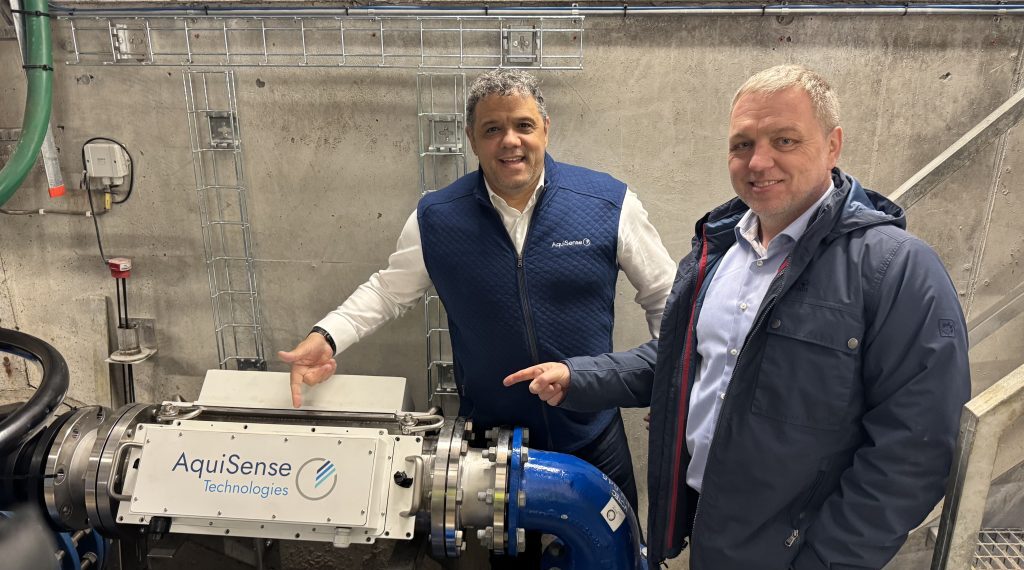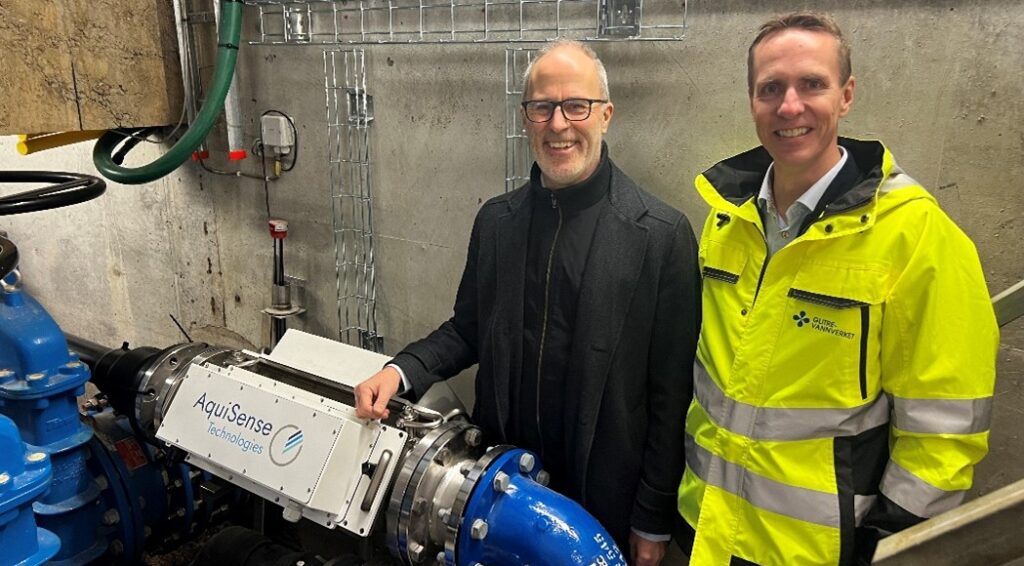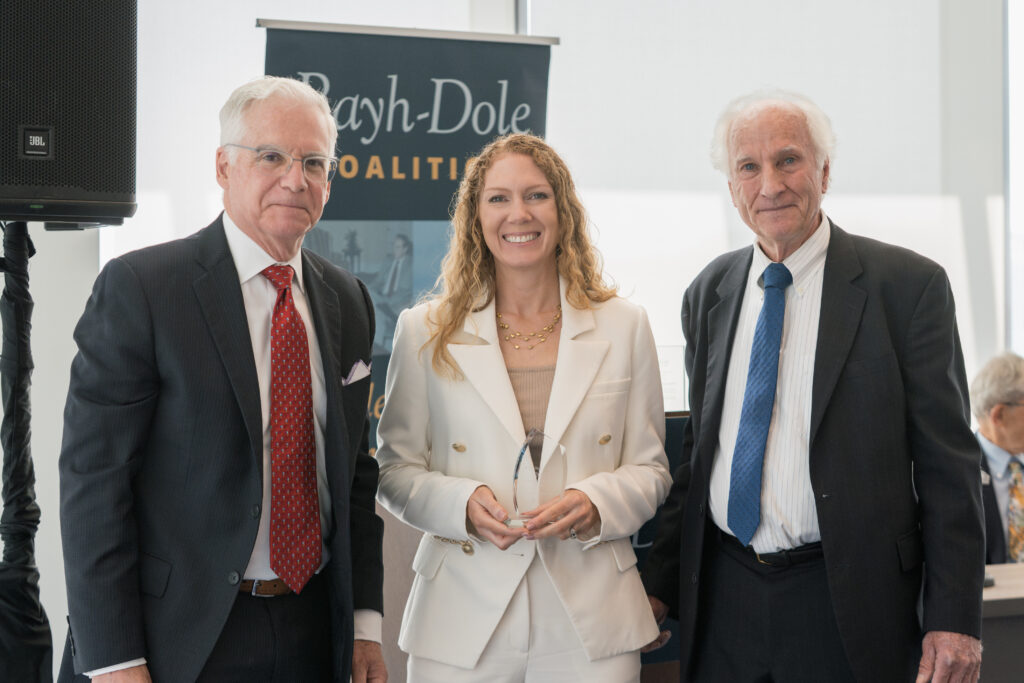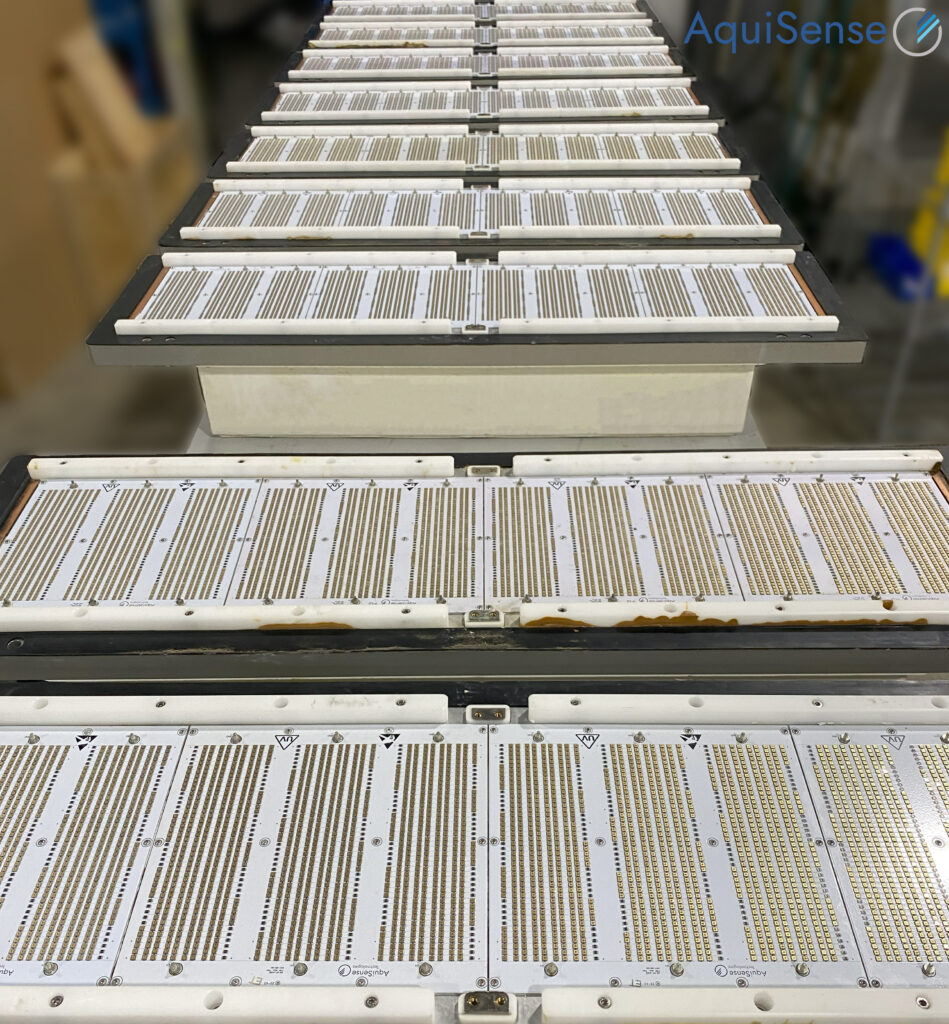

Norwegian Drinking Water Utility Moves Forward with UV-C LED for Large Scale Water Disinfection
- Norwegian drinking water supplier moves forward with UV-C LED for large scale water disinfection
- Glitrevannverket leads the way in Norway’s first municipal UV-C LED pilot project
- Collaboration with Rambøll marks AquiSense’s first large-scale utility project in Europe following company buyout
- UV-C LED technology likely to replace traditional UV systems over the next decade with mercury use facing strict restrictions and a total mining ban by 2032.
Kentucky, US – An international collaboration linking the US and European water industries is helping to accelerate the use of UV-C LED technology for municipal scale water disinfection.
Norwegian utility Glitrevannverket is working with Danish engineering consultancy Rambøll and UV-C LED market leader AquiSense, Incorporated to test multiple units designed for municipal and industrial water disinfection. The innovation project is partly funded by the Norwegian Institute of Public Health.
The pilot project at the Setervann water treatment facility near Asker, Norway, is conducting extensive testing and analysis to assess the technical, operative, and economic performance and implications for deploying UV-C LED technology. This site was chosen for its comparable water quality to many of Norway’s water sources.
Outcomes will provide valuable insights and recommendations into adapting and the potential of implementing UV-LED technology across Norwegian water treatment systems and beyond.
A PearlAqua Kilo™ unit integrates LEDs into a unique and compact design without the use of chemicals or mercury-based UV lamps. This will ensure the water treatment in the facility is future-proofed against any regulatory changes affecting mercury usage. The PearlAqua Kilo™ offers municipal and industrial level disinfection with flowrates up-to 6 MGD (22,712 m3/D).
The Glitrevannverket project follows the first municipal scale UV-C LED installation from the company in North America to the Las Vegas Valley Water District.
Alternatives Top Mercury-based Lamps
UV-C LED disinfection is gaining traction as water companies seek alternatives to traditional mercury-based lamps, with mercury use and mining facing restrictions and a potential ban in the future.
Currently, 98 percent of the UV disinfection market uses mercury-based systems, but these face global usage restrictions over the next few years, with an eventual mining ban expected in 2032, as set out by the Minamata Convention on Mercury. The convention adopted in 2013 and entered into force in 2017, aims to reduce mercury pollution, which is one of the World Health Organization’s top 10 chemicals of ‘major public concern’.
“This installation is an important step in assessing UV-C LED technology’s application in municipal water treatment,” said Tor Håkonsen, Global spearhead manager for water and wastewater treatment. “This is an exciting opportunity to evaluate UV-LED technology in real-world conditions and explore its practical application for municipal water treatment for Norway, and globally. The project will evaluate technical performance, operation stability, and cost efficiency to guide future implementation.”
European Utility Leadership
“Glitrevannverket supplies drinking water to 160,000 people, which is a large scale in Norway. We see it as our responsibility to monitor the development and testing of new technology. The Setervann water treatment plant is a reserve water source and not needed in daily use. This makes it ideal for a controlled study of the UV-LED equipment at different operating conditions without any impact on the regular water supply. We look forward to receiving results in this project and to share our experiences with the water industry” says an excited managing director Marius Asheim. “Water is our most important nutrient, and we must always look for better ways to ensure safe drinking water.”
Oliver Lawal, founder & CEO, AquiSense Inc., said: “It’s encouraging to see a European utility take the lead on the adoption of UV-C LED disinfection. This is our first municipal scale European project and follows our work in Las Vegas as more water utilities turn to UV-C LED disinfection, and move away from traditional lamp technology.”
Founded in 2014 as AquiSense Technologies LLC, the company was one of the first to commercialise UV-C LED technology for disinfection applications. It was acquired in 2016 by Nikkiso Co Ltd, a Japanese supplier of UV-C LED devices. Following an asset purchase, AquiSense Incorporated is now majority-owned by its management and employees.
###
Editor’s Notes
About AquiSense Incorporated
AquiSense stands as the global leader in UV-C LED systems design and manufacturing, delivering innovative solutions for water, air, and surface disinfection. As the world’s largest supplier of UV LED disinfection systems, we are committed to protecting public health through chemical-free, mercury-free technology.
With decades of collective experience in UV disinfection, our team brings together deep expertise in UV LED research, reactor design, and engineering. This comprehensive knowledge enables us to develop the industry’s most advanced, energy-efficient disinfection systems while maintaining the highest safety standards.
Our strategic position between LED device manufacturers and market-specific original equipment manufacturers (OEMs) allows us to serve as a crucial bridge in the UV LED market, delivering tailored solutions across multiple industries.
AquiSense Technologies is a privately held company, having achieved full independence in 2025 through an employee and external investor buyout from Nikkiso America, a member of the Nikkiso Group. This transition marked a new chapter in our commitment to innovation and excellence in UV LED technology.
Minamata Convention and Mercury:
The United Nations Minamata Convention on Mercury, ratified in 2017 and currently adopted by 152 countries, is a global treaty to protect human health and the environment from the adverse effects of mercury by reducing or phasing out the use of mercury-based products and by eliminating primary mercury mining by 2032. Parties continue to work together to control supply and trade, use, emissions and releases of mercury, raise public awareness, and build institutional capacity.
The treaty is named after the Bay and city in Japan where thousands of people and countless animals were poisoned by mercury from industrial wastewater in the 1950s and 60s. “Minamata Disease,” first identified in 1956, is a neurological disease caused by severe mercury poisoning from ingesting the toxic chemical that accumulated in sediment, fish and shellfish in the area.
Mercury is in the top 10 of chemicals of major public health concern according to the World Health Organization. By enhancing the reduction of mercury pollution, the Convention protects the environment and the lives of millions of people around the world.
About Giltrevannverket:
Glitrevannverket IKS is a Norwegian inter-municipal company owned by the municipalities of Asker, Drammen and Lier. The main purpose of Glitrevannverket is to supply the owner municipalities with good, sufficient and safe water through environmentally focused, competent and systematic management of water sources and water supply systems.
Glitrevannverket owns and operates four water treatment plants that supply water to about 160,000 people in the owner municipalities, and to the customers Frogn and parts of Holmestrand municipality. The water sources are Glitre, Røysjø and Holsfjorden. The Setervann treatment plant is a reserve source and is not in daily use.
Glitrevannverket is one of the largest providers of drinking water in Norway, known for its commitment to sustainability and innovation in water treatment technologies.
About Rambøll:
Ramboll is a global architecture, engineering and consultancy company founded in Denmark in 1945. Ramboll’s more than 18,000 experts create sustainable solutions across Buildings, Transport, Architecture & Landscape, Water, Environment & Health, Energy and Management Consulting. Across the world, Ramboll combines local experience with a global knowledgebase to create sustainable cities and societies. We combine insights with the power to drive positive change to our clients, in the form of ideas that can be realized and implemented. We call it: Bright ideas. Sustainable change.
***
Syrene Lawal
Public Relations Director
+1 859 630 5345
Syrene.Lawal@aquisense.com
Konrad Kowalk
Marketing Manager
+1 859 869 4700
Konrad.Kowalk@aquisense.com





